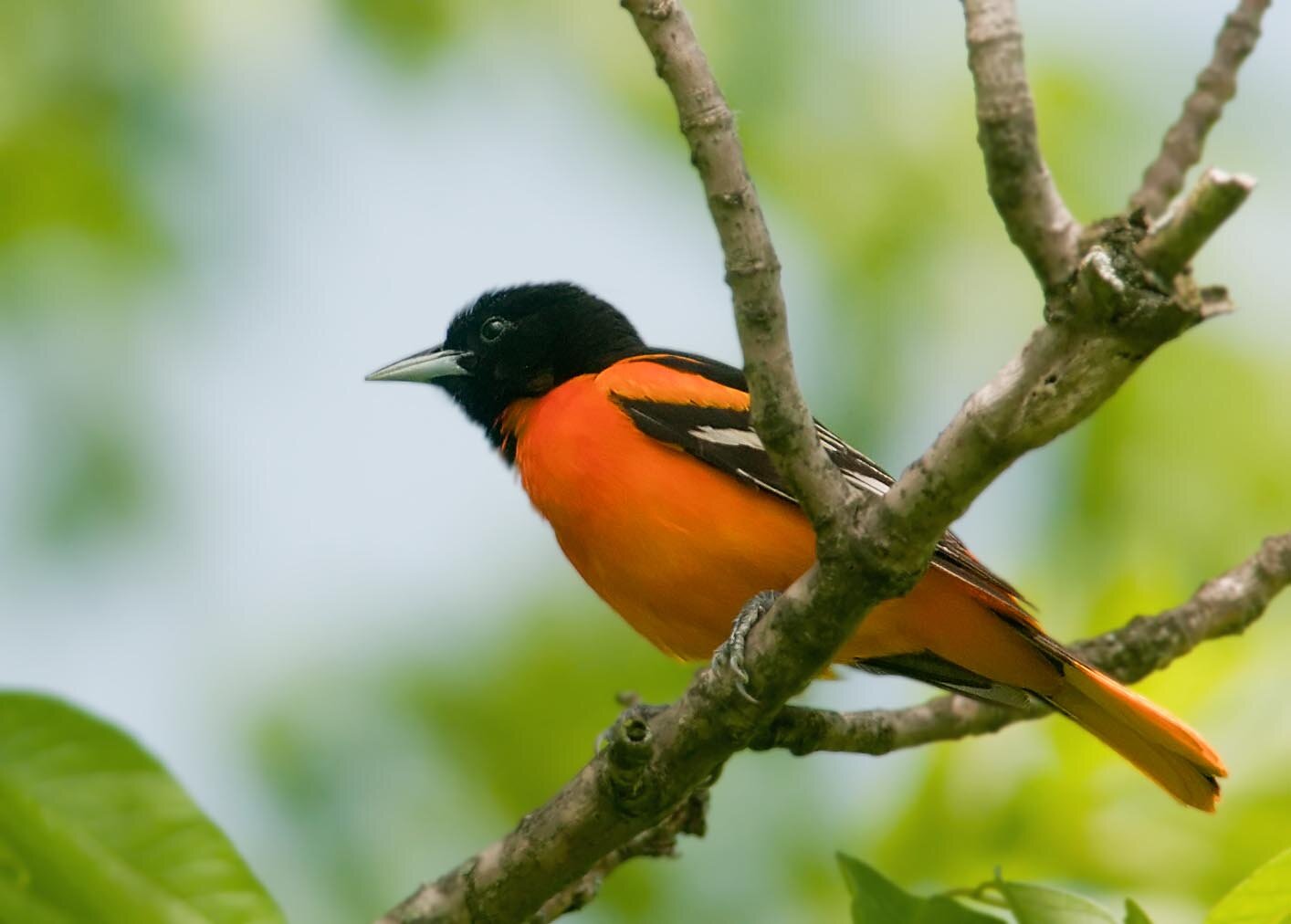Orange meets orange. Photo by Phil Brown
Spellbound weaving of dried grasses, strings, wool, thistle, and thimbleweed initiates an enchanted nest, high in a cottonwood, where the Baltimore oriole raises its young during the summer months. The magic of the oriole might be best understood in its plumage. An orange, sliced in half and stuck on a feeder, soon becomes the second most vibrant object in the yard once the Baltimore oriole finds it.
The characteristic male oriole is hard to miss, but the juvenile males and females—often a lighter orange or yellow—are sometimes overlooked or misidentified. I remember a few years back I had a juvenile in the oak near my house that gave me fits identifying it.
The awkward look of the juvenile Baltimore oriole, photo by Kelly Colgan Azar
Some orioles in Canada have undergone a serious change, a sorcerous shift that had many people misidentifying the birds as tanagers. They were red orioles. Researchers soon ran experiments to determine what was happening to paint the orioles red. In birds, the carotenoid pigments are obtained externally, through diet, and produce pigments like red, orange, and yellow.
In humans, the consumption of beta-carotene (occurring in carrots, bell peppers, and squash) can cause hypercarotenaemia, where feet, hands, and even the skin overall can take on an orange appearance. Likewise, in orioles, the consumption of invasive honeysuckle berries, which are rich in rhodaxanthin, can turn the pigment of the feathers red and orange. A similar process has occurred in some cedar waxwings that have a diet relying on the honeysuckle berries.
This odd bird raises even more questions. Cedar waxwings were documented to have their pigment changed as early as the 1960’s in response to consuming honeysuckle. Why did it take orioles so long to start appearing a different color? Also, why were these birds consuming honeysuckle berries in the first place? In the heat of the summer, orioles typically consume an insect heavy diet, though fruits remain a part of their diet throughout the year. For these birds to eat enough honeysuckle berries to become red, they must have eaten a large quantity of berries. It’s possible that the invasion of honeysuckle into forested areas caused a crash in the food web, and one of the only diet staples available was the honeysuckle. It would be interesting to follow the health of these red birds, and their potential young, to see if any adverse effects emerge.
Baltimore oriole nestling and its nest, photo by Andy Reago & Chrissy McClarren
You can see Baltimore orioles right now at Faville Grove Sanctuary, where the birds are setting up a home territory and starting to weave those intricate nests. Scattered groups of oaks, or big trees near water are potential spots you could find a nest. If you see a red bird that you determine to be an oriole in August, perhaps it’s a sign that we need to increase our control of the invasive honeysuckle.
Written by Drew Harry, Faville Grove Sanctuary land steward


































